My lunch with Julia Child
Dine at the very restaurant that changed the life of the legendary American food writer and chef.
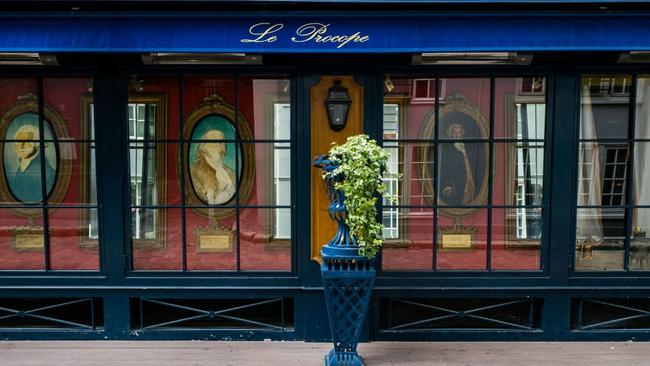
In 1948, before she became a celebrated food writer, Julia Child disembarked from the SS America in Le Havre in northern France with husband Paul and motored straight to Rouen for lunch. It was a meal that was to change the course of her life.
It’s a favourite scene from a movie I love, Julie and Julia. Planning a visit to France earlier this year, and watching the movie for the umpteenth time, my husband pondered if the restaurant still existed. A quick internet search revealed it does and continues to offer the same menu Julia enjoyed 75 years ago.
WATCH:The trailer for Julie and Julia
So, after touching down at Charles de Gaulle in Paris and collecting a hire car, we, too, set course for the historic capital of Normandy. Things have moved on since the Childs mooched into a sleepy Rouen in their Buick and casually parked in the town square. We’re stuck in traffic, then spend half an hour finding a park before battling pouring rain on foot to wend our way to Place Du Vieux Marche, home to Julia’s La Couronne restaurant and, on a more sombre note, the site of the execution of Joan of Arc.
Dating from 1345 and touted as the oldest continuously operating auberge in France, the half-timbered, slightly wonky La Couronne is tres atmospheric, with creaking floorboards, ancient beams, gleaming copper pots and a trolley of digestifs parked in front of the hearth. It’s so old that “the windows of La Couronne were illuminated by the funeral pyre of Joan of Arc”, a rather florid history of the auberge relates. (Don’t expect to recognise the restaurant from the movie; the director used a Paris stand-in.)

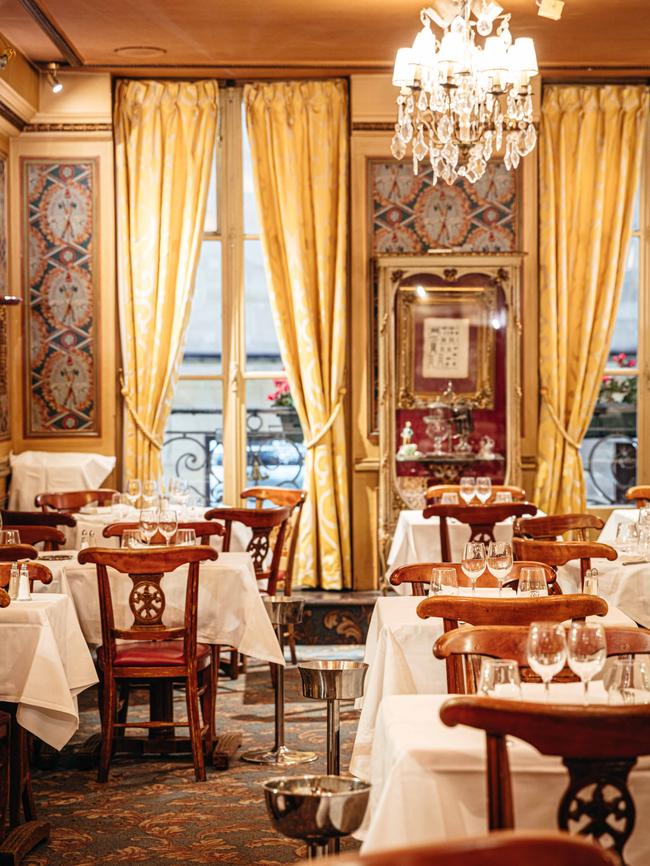
Given the venue’s long history and the Child connection, I’m anticipating a room full of tourists, but on this grey and wet Sunday the crowd is entirely local. I think many have come straight from mass; the city’s famous cathedral painted so often by Monet is a 10-minute stroll away. Snug in a corner in the downstairs dining room, a little table lamp glowing reassuringly in the Normandy gloom, I set my watch for 1948. What with the antiquated setting, traditional menu, theatrical flambe-ing and duck press wheeled to table like some ancient instrument of torture, time seems to have stood still in this corner of France.
The staff are lovely and rather chuffed we have requested the Julia menu. A photo of the tall television chef is front and centre, although dear Julia seems a rather dim star in the firmament of celebrities who have visited La Couronne over the decades. Upstairs and down is adorned with photos of famous patrons, such as Bridget Bardot, Sophia Loren, Grace Kelly, John Wayne, Audrey Hepburn, Queen Elizabeth II and Patti Smith.
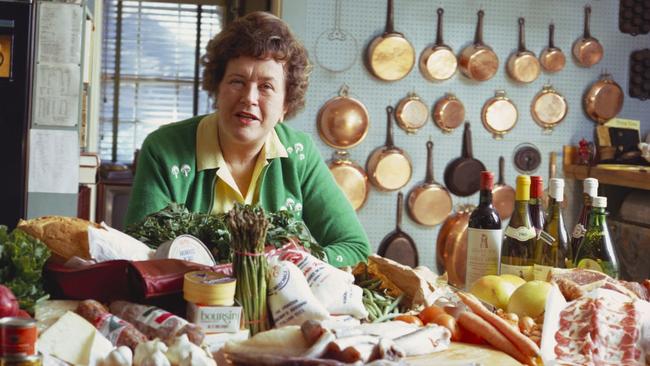
While I peruse the old photos, fat Brittany oysters are shucked and whizzed to the table, served simply with lemon and brown bread and butter. Then comes Julia’s sole meuniere, swimming in a velvety beurre noisette. And the wine, Paul’s pick, a delicious Pouilly-Fume from the Loire. A calvados souffle lands softly on the table, a little deviation from the Julia menu, but effectively cosseting us in the very belly of French gastronomy. More bread and Normandy butter, please!
La Couronne may be a restaurant famous for being famous, indeed food writers and grumpy TripAdvisor contributors are sometimes a bit sniffy, but I can’t resist the romance of this historic inn. Somehow Julia’s lunch sets the tone for the trip as we ferret out heritage establishments with movie-set interiors or where the associations with writers, artists and intellectuals are as compelling as the food. Sometimes more so.
In Paris we start with a charming bouchon, or typical Lyonnais bistro, Aux Lyonnais in the heart of the 2nd arrondissement, and these days part of the Alain Ducasse empire. The decor hasn’t changed a jot since the 1890s, with tiled floors and brass chandeliers, red velvet banquettes and engraved windows, a billowing curtain at the door to exclude winter drafts.
Under new chef Marie-Victorine Manoa, Lyonnais dishes are given a light touch with the excellent food shining as enchantingly as the Belle Epoque room. There are new season white asparagus with fresh morels and a delightful wild garlic quenelle swimming in a zingy soup of fresh spring peas and broad beans. The traditional Lyonnais chicken fricassee with a side of giblet salad is wonderful.
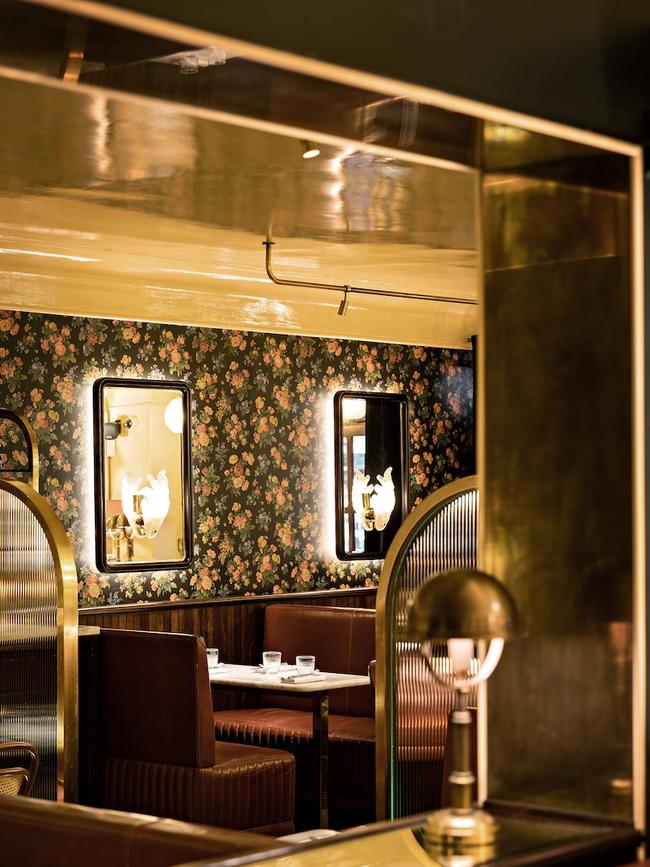
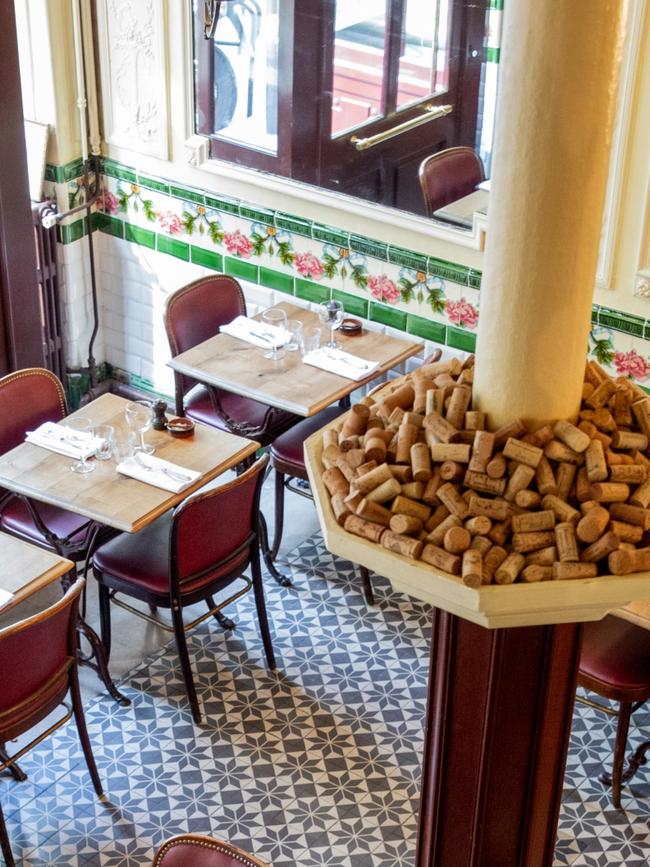
Across the Seine in Saint-Germain-des-Pres, Le Procope claims to be the city’s oldest coffee house, founded in 1686 and one of the first establishments in Europe to serve brews to the masses. Regular customer Voltaire was thought to have downed as many as 40 cups a day (infused with chocolate) although this hardly seems possible. During the revolution Robespierre and his cronies met at Le Procope. Napoleon left his bicorn hat to cover the cost of a meal and it’s still there, behind glass, along with Voltaire’s desk.
As touristy as Laduree, and just as pretty, this museum-like restaurant is a hoot. It’s packed with American tourists (Benjamin Franklin blazed the trail), and the restaurant fairly buzzes as wait staff make a great fuss of finishing dishes in the dining room (I can recommend the crepes flambeed with Grand Marnier). Have the fish; the French know better than anyone how to cook fish. Or the coq au vin, or, if you’re brave, the calf’s head casserole. But don’t worry too much about the food; it’s the decor, the rich red and nicotine-yellow walls, and ghosts of guests past that are most diverting, along with the maze of set-in-aspic dining rooms dedicated to the likes of Marat, Chopin and Diderot.

Fast forward a century or three to the 1950s when Aux Pres, tucked away on Rue du Dragon, a macaron’s toss from Cafe Floret, was the place to be on the Rive Gauche. It was reinvented a decade ago by Cyril Lignac, one of France’s best-known Michelin-starred television chefs, but retains the original floral wallpaper. This tiny, elegant bistro offers classic dishes, some with an Asian twist. Try the miso aubergine with a squeeze of lime or the tartare of Simmental beef with Paris-perfect fries, then the wicked French Toast, brioche bread loaded with sweet raspberries.
Just off Boulevard Saint-Germain, Rue du Dragon was once home to a little colony of French authors; Victor Hugo lived for a while at No.30, just across the road from Aux Pres.
There are more literary associations, and beguiling interiors at Brasserie Lipp (Hemingway called it Lipps) just up Boulevard St Germain.
Perhaps the city’s most famous historic restaurant and a Julia favourite, Tour d’ Argent, overlooks the Seine and the ongoing restoration of Notre Dame. It has recently emerged from its own makeover. If a meal at this legendary restaurant is too pricey, pop across the road to its sibling boulangerie, Le Boulanger de la Tour, serving among the best pastries in the city. Have the Paris-Brest.
It’s a sweet full stop to a brief tour of restaurants that have stood witness to French history. And inspired Julia to take French food to the US and beyond.
The full season of Julia, starring Sarah Lancashire, is streaming on Fox Showcase.




